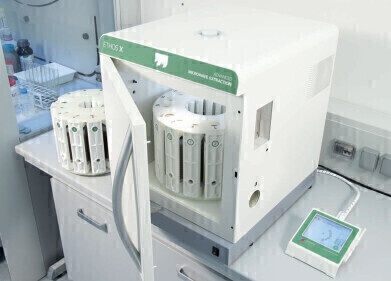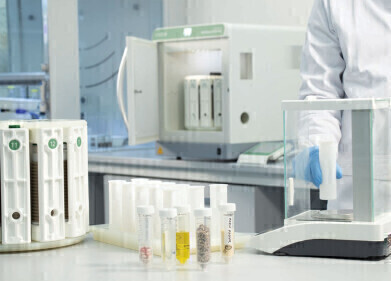-
 A highly throughput method for fatty acid profiling using simultaneous microwave-assisted extraction and derivatisation
A highly throughput method for fatty acid profiling using simultaneous microwave-assisted extraction and derivatisation -
 Simplifying Fat Extraction for Food and Feed Samples with Milestone's ETHOS X
Simplifying Fat Extraction for Food and Feed Samples with Milestone's ETHOS X
GC, MDGC
Fatty acids profiling with a new single step extraction-derivatization method
Jan 24 2023
The composition of fatty acids in food products is a crucial parameter for evaluating their quality. Microwave assisted solvent extraction offers an efficient and competitive solution for sample preparation. Milestone’s ETHOS X with SR-15 eT1 rotor was used in this study to prove its efficacy in the extraction and simultaneous derivatization of FAMEs in several food samples.
INTRODUCTION
Food products are routinely analyzed to determine their composition in saturated and unsaturated fatty acids to communicate their nutritional value, monitor their quality and origin, and confirm the absence of TFAs (trans fatty acids) which are associated with multiple health issues2.
Their analysis usually requires an initial extraction of the lipid fraction from the matrix components of the product. This extraction step is then followed by derivatization by transesterification to form the more volatile fatty acid methyl esters (FAMEs) that can be analyzed by gas chromatography (GC). Although these procedures have proven to be efficient over the years, they are cumbersome and labor intensive. Consequently, single step extraction-derivatization techniques have gained interest.
In this application note, a comparative study was performed to compare the microwave single step extraction-derivatization method with AOCS Official Method Ce 2b-11.
Further information can be found in the original paper2.
EXPERIMENTAL
EQUIPMENT
- Milestone’s ETHOS X1 with magnetic stirrer
- SR-15 eT rotor.
PROCEDURE
The goal of this work was to propose a microwave assisted extraction and derivatization (MAED) method that can be used for a large variety of food commodities, maximizing the throughput. The choice of the derivatization reagent to use in the MAED procedure was based on different considerations related to efficiency, yield, throughput, and green and sustainability aspects. The comparison of the MAED method optimized using HCl in methanol was compared with the results obtained following AOCS Ce 2b-11 method.
Other method comparisons are reported in the work published by Fina et.al.2
CONCLUSION
Fatty acids (FAs) are routinely analysed on food products to report some basic information about the nutritional content. Although the current methods of analysis provide reliable results, they are cumbersome and laborious.
Indeed, using a single-step MAED combined with a fast GC×GC analysis allowed for a complete FAs profiling in a short time (∼30 min), with minimal sample and solvent consumption, and for multiple matrices. The results were comparable to those obtained by the methods currently in use.
The ETHOS X with SR-15 eT rotor1 enables simultaneous solvent extraction and derivatisation of up to 15 samples. The use of contactless temperature control ensures high reproducibility of the extraction process. The results demonstrated the efficiency of the ETHOS X with SR-15 eT rotor as routine solution for food laboratories, enhancing the lab productivity.
Read the complete study here.
1 Learn more about ETHOS X microwave extraction system here.
2 Read the original paper here.
Events
Apr 22 2025 Kintex, South Korea
Analytica Anacon India & IndiaLabExpo
Apr 23 2025 Mumbai, India
Apr 27 2025 Portland, OR, USA
May 11 2025 Vienna, Austria
May 18 2025 Tempe. AZ, USA















